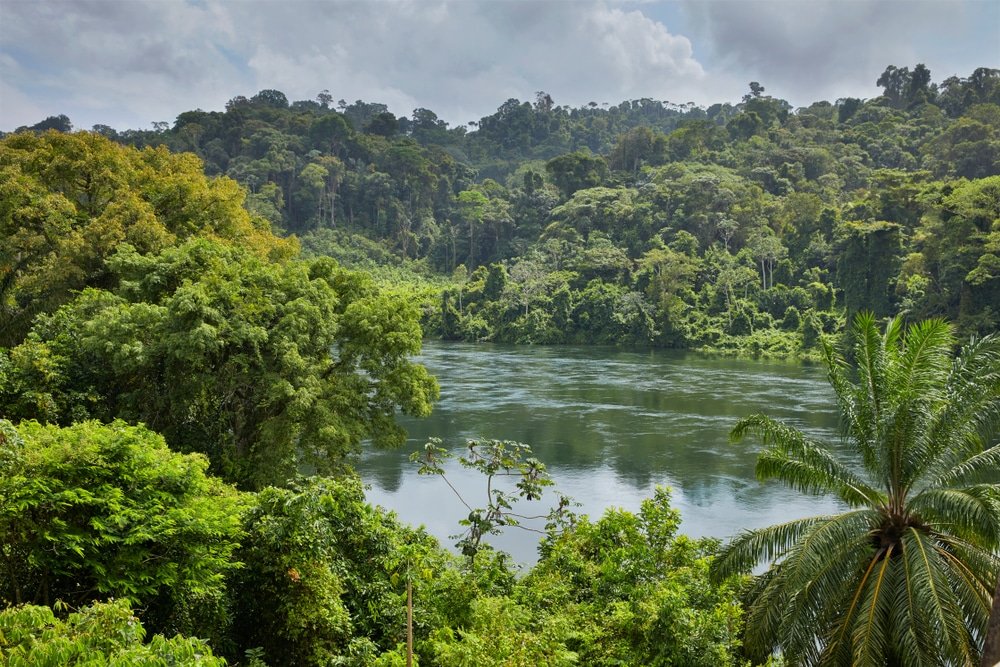One of the few carbon-negative countries, Suriname, aims to be the first nation to sell carbon credits created by the Paris Agreement also known as the “Internationally Transferable Mitigation Outcomes” or ITMOs.
Suriname’s carbon credits use a baseline of carbon stock its rainforest stores as it registers with the United Nations. Any increase in the carbon stock represents corresponding emission reductions, which generates the equivalent carbon credits.
The Paris Agreement suggests that nations can sell those emission reductions in the form of ITMOs to other entities seeking to use them toward their own climate targets.
Government-Backed Carbon Credits
Forests cover around 95% of the South American nation, serving as significant carbon sinks benefiting the entire planet. The deforestation rate in the country stands at only 0.05% to 0.07%, making the country carbon-negative. Its forests capture carbon more than the nation emits.

These credits, also called ITMOs, are integral to Suriname’s economic and environmental policies, said President Chan Santokhi. He further noted that it will be the “beginning of the long-awaited access to climate finance.”
Suriname can use the ITMOs toward its Paris Agreement targets, but companies can also buy them to offset their own climate goals. The heavily forested nation can issue the ITMO credits within weeks.
According to the country’s advisor for the sale, thirty companies were evaluating if they were going to buy the ITMO credits. But there’s no mention of the credit price and the volume of the issuance.
The planned sale is a bid to draw in investors with government-supported carbon credits that adhere to the UN guidelines. Some market players find this relevant as businesses relying on voluntary carbon markets for offsets grow wary of some private projects found to fail in delivering their promised emission reductions.
ITMOs for Net Zero
At COP27, Ghana presented the landmark bilateral authorized project under a ITMO deal with Switzerland. Governments can use ITMOs for their net zero targets.
If Suriname’s first ITMO credits sale proves to be a success, it will snowball, attracting other countries to follow suit.
Honduras and Belize will take Suriname’s lead and will issue their own ITMOs, too. They will issue 10 million credits each by 2024. If that happens, it can help increase demand signals for ITMOs.
This could have never been more timely as nations attending this year’s global climate summit, COP28, in Dubai in November to December are required to report on the progress of their climate targets.
Governments have set their carbon emissions caps. Those that go beyond the limit can sell the credits to those that weren’t able to do so. As the cap decreases, carbon levels also fall.
It works the same as how companies use carbon offsets toward their net zero targets. And while developed nations also have to prioritize intensive carbon reduction efforts, chances are they will still need carbon credits.
For instance, the United States aims to achieve reductions of 25% by 2025 versus 2005 CO2 emissions levels. But experts believe that a realistic goal would be 17%. Any emissions left unabated can be compensated by buying ITMOs from carbon-negative nations like Suriname.
The System is Still Lacking, But Sales are Good to Go
A lead policy analyst at Carbon Market Watch, Giles Dufrasne, warned that the REDD+ emissions reductions backing the ITMOs didn’t go through robust verification standards. It will be up to the buyer to assess the credits and request for further information as needed.
Dufrasne further noted that there are still some technical details being worked at, but current rules are enough to facilitate the sales. This is supported by another carbon market negotiator saying that though the system wasn’t fully established, the sale can push through and be registered later when the system is up and running.
Commenting on this, a REDD+ expert Gustavo Silva-Chavez, said:
“It may not be a perfect system, but it’s better than nothing… By the time it gets perfect, it’s going to be in 20 years and the forests are gone.”
Prior to Suriname’s news, Gabon had announced that it would issue ITMO credits back in 2022. However, the African nation faced criticisms that its forests actually didn’t reduce emissions. The country held up the plan until a military coup further caused problems, making the plan unclear.
Suriname’s President Santokhi recently led a ground-breaking ceremony for the country’s mangrove carbon credit and agroforestry projects. This is in partnership with Klimat X, a provider of high-quality carbon credits from afforestation and reforestation projects.
Klimat X had signed an agreement with Suriname’s national government to develop mangrove and agroforestry carbon credit projects. The company has built a presence in the country and actively conducts fieldwork to establish project size and feasibility.
Leveraging its extensive rainforests as carbon sinks, Suriname stands to generate revenue from internationally transferable mitigation outcomes (ITMOs) while contributing to global climate goals. This initiative could set a precedent and provide a lifeline for countries struggling to meet their net zero targets.

